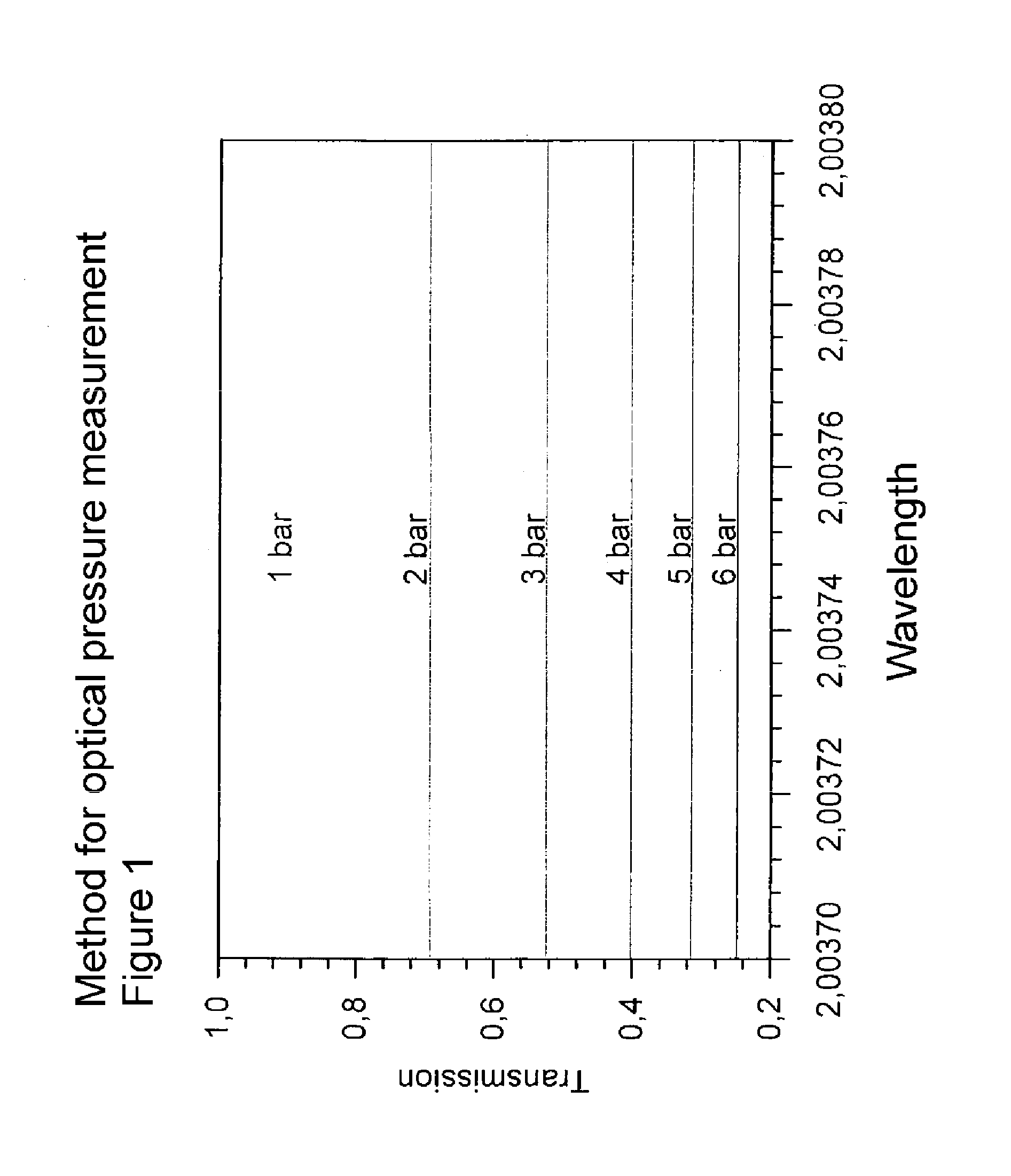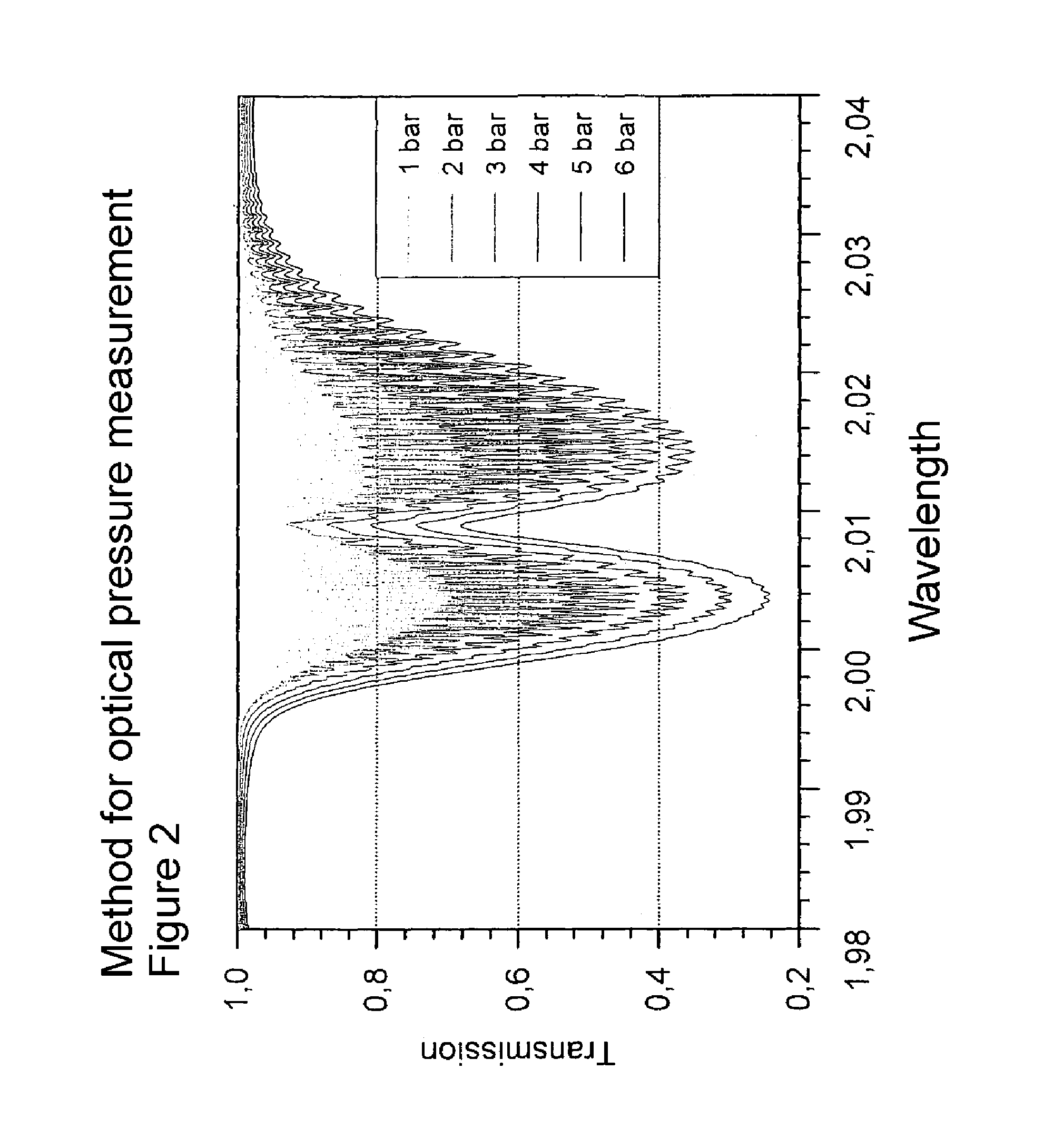Method and device for optical pressure measurement of a gas in a closed container
a technology of optical pressure measurement and closed container, which is applied in the direction of instruments, specific gravity measurement, mechanical means, etc., can solve the problems of inability to automate methods, increase expenditure, and time-consuming exact measurement of absorption lines, etc., and achieves simple and robust results
- Summary
- Abstract
- Description
- Claims
- Application Information
AI Technical Summary
Benefits of technology
Problems solved by technology
Method used
Image
Examples
Embodiment Construction
[0035]While this invention may be embodied in many different forms, there are described in detail herein a specific preferred embodiment of the invention. This description is an exemplification of the principles of the invention and is not intended to limit the invention to the particular embodiment illustrated
[0036]For better understanding of the present invention, the basic physical principles of the optical pressure measurement of gases will be outline at first:
[0037]The optical pressure measurement is based on the absorption of electromagnetic radiation by molecules according to the law of Lambert and Beer
ITrans=I0exp(αd)
wherein ITrans is the transmitted intensity, I0 the radiated intensity, α the absorption coefficient and d the path length across the measurement volume. For the absorption coefficient depending on the frequency v we have:
α(v)=σ(v)N,
wherein N is the number of the absorbing molecules per volume and σ(v) is the wavelength-depending absorption cross section. From ...
PUM
| Property | Measurement | Unit |
|---|---|---|
| wavelengths | aaaaa | aaaaa |
| wavelengths | aaaaa | aaaaa |
| wavelength | aaaaa | aaaaa |
Abstract
Description
Claims
Application Information
 Login to View More
Login to View More - R&D
- Intellectual Property
- Life Sciences
- Materials
- Tech Scout
- Unparalleled Data Quality
- Higher Quality Content
- 60% Fewer Hallucinations
Browse by: Latest US Patents, China's latest patents, Technical Efficacy Thesaurus, Application Domain, Technology Topic, Popular Technical Reports.
© 2025 PatSnap. All rights reserved.Legal|Privacy policy|Modern Slavery Act Transparency Statement|Sitemap|About US| Contact US: help@patsnap.com



